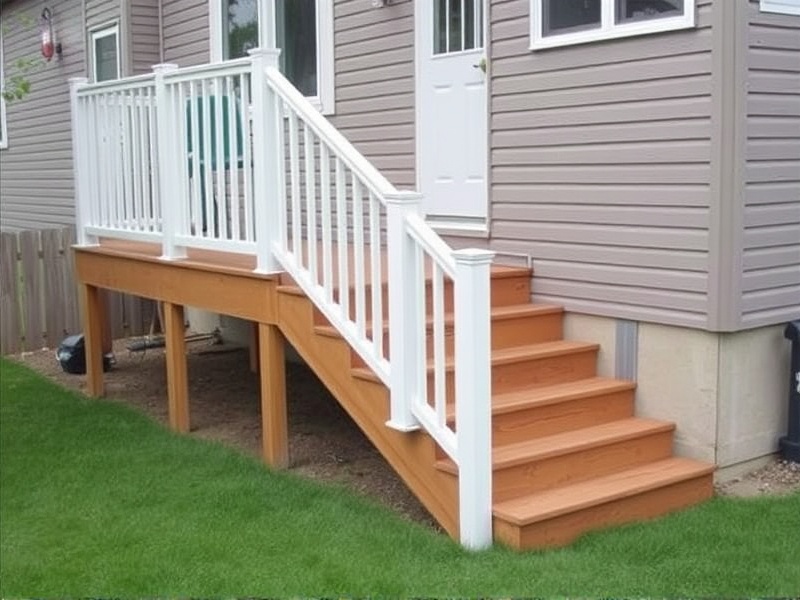Our Location
304 North Cardinal St.
Dorchester Center, MA 02124
Get an in-depth look at corner deck stairs, from installation processes to maintenance tips, ensuring your outdoor space remains safe and inviting.

Corner deck stairs can add an elegant touch to your outdoor living space, providing easy access from your deck to the ground level. However, installing corner deck stairs requires careful planning and execution to ensure safety and durability. This comprehensive guide will walk you through the entire process, from choosing the right materials to troubleshooting common issues.
To build corner deck stairs, you’ll need a variety of tools and materials. The essential tools include a circular saw, a drill, a level, a tape measure, and a hammer. For materials, you should consider pressure-treated lumber for the stringers, treads, and risers, as it is resistant to rot and insects. Additionally, you may need concrete footings, metal connectors, and galvanized screws to secure everything in place.
Safety should always be your top priority when undertaking any home improvement project. Before starting, ensure that all tools are in good working condition. Wear protective gear such as gloves, goggles, and a dust mask. When working at heights, use scaffolding or a ladder with proper support. Always follow the manufacturer’s instructions for power tools and equipment. Properly securing the stairs to the deck and the ground with metal connectors can also prevent accidents.
The first step is to plan the layout of your corner deck stairs. Measure the distance between the deck and the ground level, and determine the number of steps needed based on local building codes. Typically, each step should rise no more than 7 inches and extend at least 10 inches out from the riser. Sketch your design, considering aesthetics and functionality.
Stringers are the backbone of the staircase, supporting the weight of the stairs. Cut two identical stringers using your circular saw, following the measurements from your design. Attach metal connectors to the top of the stringers to secure them to the deck. Reinforce the bottom of the stringers by pouring concrete footings.
Once the stringers are in place, attach the treads and risers. Treads are the horizontal surfaces you step on, while risers are the vertical components between steps. Use galvanized screws to attach these securely to the stringers. Ensure that each tread overhangs the riser slightly to provide a comfortable landing surface.
After completing the main structure, add finishing touches like handrails and balusters for added safety and aesthetic appeal. Handrails should be installed along both sides of the staircase and must meet local building code requirements regarding height and spacing.
Several common mistakes can lead to structural failures or unsafe conditions. One frequent issue is uneven or unstable stringers, which can cause wobbly stairs. To avoid this, ensure all stringers are cut accurately and reinforced properly. Another pitfall is improper attachment of treads and risers, leading to loose or squeaky steps. Always use high-quality screws and tighten them adequately. Lastly, neglecting proper drainage around the stairs can result in water damage and decay. Incorporate drainage solutions into your design to protect your investment.
Building corner deck stairs can enhance your outdoor living experience significantly. By following this detailed guide, you can ensure that your project is safe, durable, and aesthetically pleasing. Remember to plan carefully, use quality materials, and adhere to safety guidelines throughout the process. Happy building!